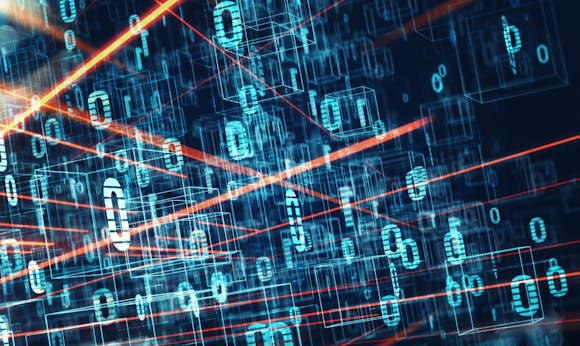
An Introduction to Cryptography History
An Introduction to Cryptography History
The history of cryptography can be traced down nearly 4,000 years ago with hieroglyphs in ancient Egypt. Although these inscriptions were not completely secret, they incorporated one of the essential elements of cryptography: a deliberate transformation of the writing. (Kahn, 1967)
As the need for secrecy and privacy grew, cryptography became a political technology, where kings and queens could rule their countries and army generals command their armies, keeping their secrets and strategies safe from prying enemy eyes.
This need for secrecy inspired many scientific breakthroughs. For every new code that was created, a new code breaker had to follow, increasing the need for investment in technology. Mathematics, linguistics, and even quantum theory have been involved and the results were technological developments that we use in our everyday lives, including tools like the modern-day computer.
As information becomes an increasingly valuable commodity and as communication changes society, the process of encoding messages, known as encryption, will play an increasing role in everyday life. (Kahn, 1967)
How has cryptography evolved over the years?
If we take a look back in time, we can see that there has always been a need to protect information. This encouraged many inventions to keep this information secure.
In ancient Greece, leaders would tattoo their slave’s heads and wait for their hair to grow back before sending them to other leaders with valuable information. Although this is not a complete form of cryptography since the message could be read once found, it highlights the early need to keep information safe.
When we think about the Roman Empire, we always think of innovation and significant contributions to science, mathematics, politics, and economy. That’s why it is no surprise that during his rule, Emperor Julius Caesar developed a system to send confidential information to his troops using a cipher with two alphabets which were rotated into different positions to find the message.
Cryptography in the twentieth-century: Room 40 and the Enigma Cipher
With the start of WWI, the military alongside the government, used codes and ciphers to protect their intel. These were relatively primitive and quite easy to break.
The British military established headquarters to command their armies and their allies in the Admiralty Building in London. It was here, in Room 40, that would make history when the German’s naval code was broken. This action proved to be pivotal in winning the war.
In 1918, a German electrical engineer named Arthur Scherbius transformed cryptography, creating one of the most feared encryption systems in history called Enigma. With his engineering background, he took the ancient cipher and adapted it to electricity, swapping the paper-and-pencil ciphers used during WWI. He believed his technology was impenetrable and that this would make it quite popular among the military and business community.
By 1923, Winston Churchill’s publication called The World Crisis revealed how the British intelligence in Room 40 gained access to valuable German cryptographic material and eventually broke it. This made the Germans aware of their lack of communication security, and by 1929, they would have bought over 30,000 Enigma machines.
In contrast to the previous war, these ciphers would require not only linguists and lexicographers, but also mathematicians. “It looked as if this machine would play a vital role in ensuring Nazi victory, but instead it was ultimately part of Hitler’s downfall.” (Sing, 1999).
The science used behind the code-breaking of Enigma, would result in the creation of Colossus in Bletchley Park. This was an electromechanical machine that helped summarise fielded information and accounting applications. Innovations like these would play a significant role in the development of the electronic computer.
PGP Encryption, the modern age cryptography
The surge of the Internet gave humanity information at the grasp of their keyboard. Still, as this technology evolved and started to become more personal, it also opened the door for our private information to land in the hands of bad netizens.
PGP or Pretty Good Privacy started as an applied cryptography used to protect the data of human rights activists. Phil Zimmermann, its creator, believed that everyone had the right to privacy. That’s one of the reasons why he provided his technology as open-source; to give access to everyone who wanted to use it.
These days, PGP is used for private messages and transactions across the world. Everything from your email to your ATM uses PGP to secure customer safety. “In the past years, strong encryption has become entrenched in the world economy, and it was PGP that paved the way for that” (Zimmermann, 2020).
PGP encryption uses a combination of two types of encryption: symmetric-key and public-key encryption; “What made PGP stand out is that it provided the world with a standard way to encrypt emails regardless of the underlying email system. It doesn’t matter what email system you’re using, the PGP protocol can scramble emails from your computer and ensure that only the sender and recipient can decipher them.” (Phil Dunkelberger, 2020)
PGP encryption is a critical security feature of StartMail’s email service – it scrambles the contents of your messages so that it can’t be read by anyone other than the sender and the intended recipient. Encrypting your email is an essential step in protecting your online privacy. Use StartMail to protect your email with strong encryption. Start your 7-day trial today!
Sources:
Kahn, David (1967) “The Codebreakers.” New York, Simon & Shuster.
Singh, Simon (1999). “The code book: the evolution of secrecy from Mary, Queen of Scots, to quantum cryptography.” London. Doubleday.
More from the blog


Why Encryption Is So Important for Our Society
Continue reading
What Makes StartMail Different From Other Privacy Email Providers?
Continue reading
What Is GDPR and How Does It Protect Your Online Privacy?
Continue reading